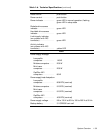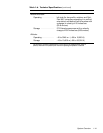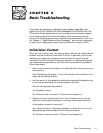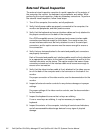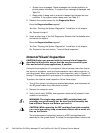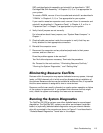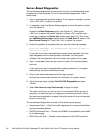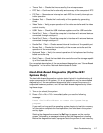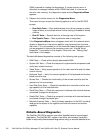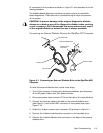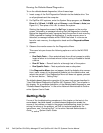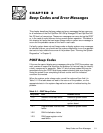
Basic Troubleshooting 2-5
SEC cartridge/heat sink assembly and reinstall it as described in “SEC
Cartridge/Heat Sink Assembly” in Chapter 4, 5, 6, or 7, as appropriate for
your system.
To reseat a DIMM, remove it from its socket and reinstall it as described in
“DIMMs” in Chapter 4, 5, 6, or 7, as appropriate for your system.
If you need to reseat an expansion card, remove it from its connector and
reinstall it as described in “Expansion Cards” in Chapter 4, 5, or 6 or in
“Expansion Card” in Chapter 7, as appropriate for your system.
4. Verify that all jumpers are set correctly.
For information about these jumpers, see “System Board Jumpers” in
Chapter 1.
5. Check all cable connectors inside the computer to verify that they are
firmly attached to their appropriate connectors.
6. Reinstall the computer cover.
7. Reconnect the computer and any attached peripherals to their power
sources, and turn them on.
Does the problem appear to be resolved?
Ye s .
No further steps are necessary. Terminate the procedure.
No.
Proceed to the next sections, “Eliminating Resource Conflicts,”
“Running the System Diagnostics,” and “Getting Help.”
(OLPLQDWLQJ5HVRXUFH&RQIOLFWV
Devices within the computer may require dedicated memory spaces, interrupt
levels, or DMA channels, all of which must be allocated during installation of
the devices. Because a device may be installed at a different time, it is possible
that the same resource is assigned to two or more devices.
Resource conflicts can result in disorderly or erratic system operation or failure
of the system to operate at all. If you suspect that resource conflicts might
exist, check the system and reassign the resources as necessary.
5XQQLQJWKH6\VWHP'LDJQRVWLFV
The OptiPlex GX1/GX1p systems use either diskette-based or server-based
diagnostics. The OptiPlex NX1 systems use either server-based, hard-disk–
based, or (optionally) diskette-based diagnostics using an external diskette-
drive kit connected to the computer as shown in Figure 2-1 and described in
“Diskette-Based Diagnostics” found later in this chapter.



